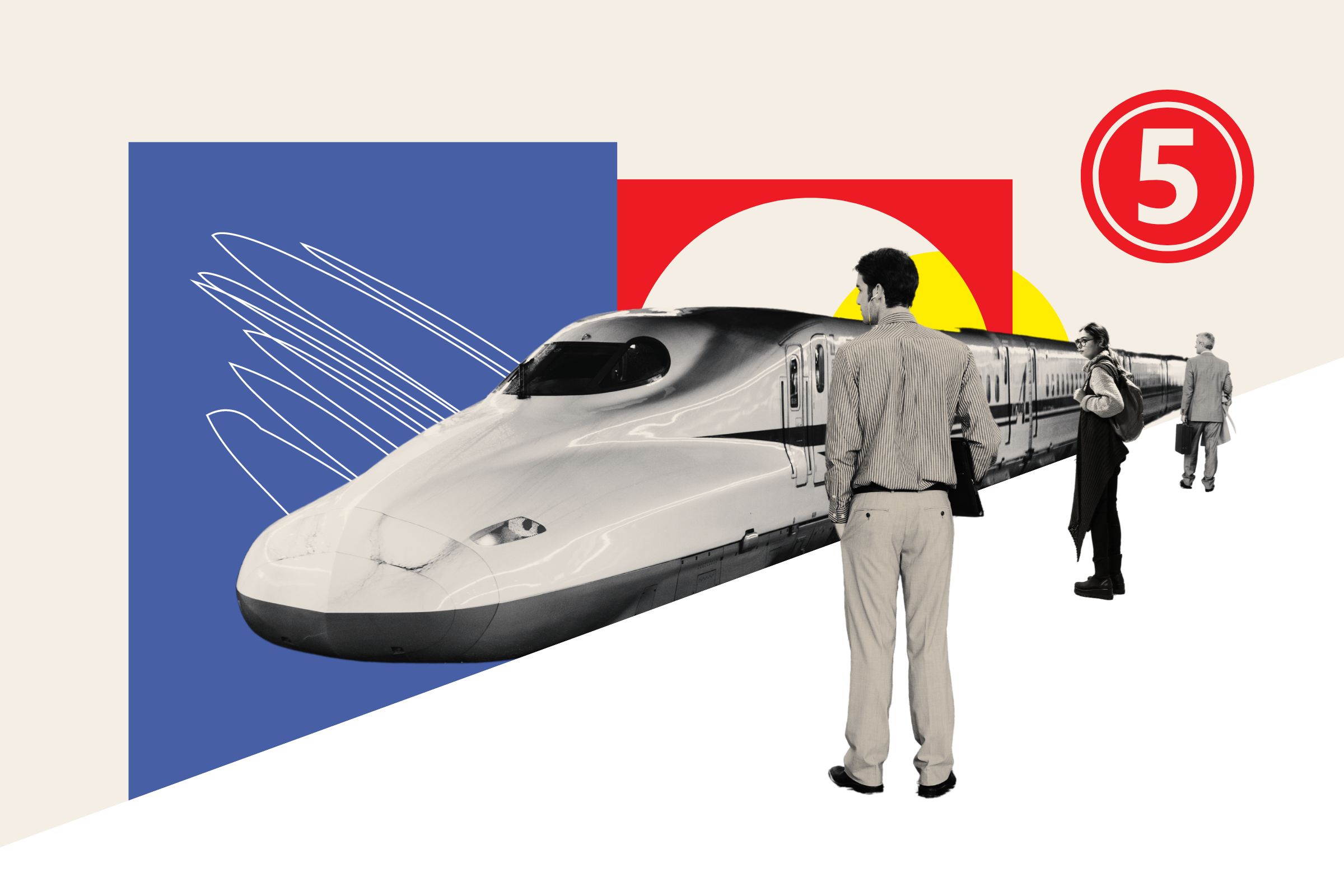Uncommon Knowledge
Newsweek is committed to challenging conventional wisdom and finding connections in the search for common ground.

After decades of little activity, the past few years have featured a renaissance in plans for high-speed rail lines across the United States, with a number either under construction or in the development phase.
In January, work began on a new 218-mile Brightline West line connecting Las Vegas to southern California, which the company has dubbed America’s “first true high-speed rail system.”
Three months later, President Joe Biden and Japanese Prime Minister Fumio Kishida endorsed plans for a 240 mph line connecting Houston and Dallas that would be constructed around Japanese Shinkansen technology. The proposal was also backed by Texas Senator Ted Cruz, who told Newsweek it would “create jobs and support the economy.”
Separately, the North Central Texas Council of Government (NCTCOG) is pushing for a high-speed rail line connecting Dallas and Fort Worth, though details remain vague at this stage, while the Southeast Corridor Commission has developed proposals for a route linking Raleigh, North Carolina, to Atlanta and then to Nashville and Orlando.
This activity has focused interest on best practices from around the world, with Japan, China and a number of European countries already having advanced high-speed rail networks.
Newsweek has composed a list of the five fastest in the world based on data compiled by Railway Technology, a leading rail focused business publication.
France has a network of Train a Grand Vitesse (TGV) high-speed rail lines connecting Paris to Marseille, Bordeaux, Lyon, Strasbourg, Lille and Lyon, along with Brussels in Belgium and London in the U.K. via the Channel Tunnel.
The trains run at up to 230 kph (198.5 mph) on some routes, according to CNN, and are operated by French national rail company SNCF.
The TGV network’s is based around dedicated high-speed lines, known as LGVs (Lignes à Grande Vitesse), which are able to handle the rapid speeds at which its trains travel. The lines use advanced technology for track construction, signaling and train control, ensuring reliability and safety.
Germany’s Intercity Express (ICE) rail network, operated by Deutsche Bahn, is the flagship high-speed train system in Germany. Launched in 1991, the ICE network connects major cities, including Berlin, Frankfurt, Munich, Cologne and Hamburg, and extends to neighboring countries.
Its trains travel at speeds of 217 mph, according to Railway Technology, along high-speed lines known as Schnellfahrstrecken, which incorporate advanced signaling systems, robust track construction and modern station facilities.
The network also integrates with Germany’s broader rail system, allowing for transitions between high-speed and regional services.

China’s Fuxing rail network, which launched in 2017, connects a number of the country’s biggest cities, including Beijing to both Shanghai and Guangzhou.
Operated by the China State Railway Group, Fuxing trains are among the fastest commercially operating trains in the world, capable of reaching speeds of up to 217 mph according to CNN.
The Fuxing network makes extensive use of cutting-edge technology, including advanced signaling systems, real-time monitoring and robust infrastructure designed to withstand various environmental conditions. The trains come equipped with Wi-Fi and modern entertainment systems.
The CRH 380A railway network, also referred to as Hexie, is a series of high-speed trains that travel at the same speed as their Fuxing counterparts but have been recorded going faster in testing, according to Railway Technology.
Launched in 2007, the Hexie trains incorporate technology and expertise from countries such as Germany, Japan and France. The name “Hexie” means “harmony” in Chinese, reflecting the trains’ role in harmonizing rapid transit across China’s vast regions.
The Hexie network, which is also operated by China State Railway Group, runs along a number of routes, including the Beijing-Shanghai and Wuhan-Guangzhou lines. The trains were a precursor to the more advanced Fuxing series but remain integral to the high-speed rail network, offering reliable and fast connections across the country.
The world’s fastest public train, capable of reaching 286 mph, the Shanghai Maglev connects the city’s Pudong airport with Longyang Road station in the city center. Unlike the other lines on this list, Maglev uses magnetic levitation technology, which allows the train to float above the tracks through the use of powerful magnets.
Opened in 2004 the Shanghai Maglev line covers roughly 30 kilometers (18.6 miles) and takes about 7 to 8 minutes.
Newsweek is committed to challenging conventional wisdom and finding connections in the search for common ground.
Newsweek is committed to challenging conventional wisdom and finding connections in the search for common ground.